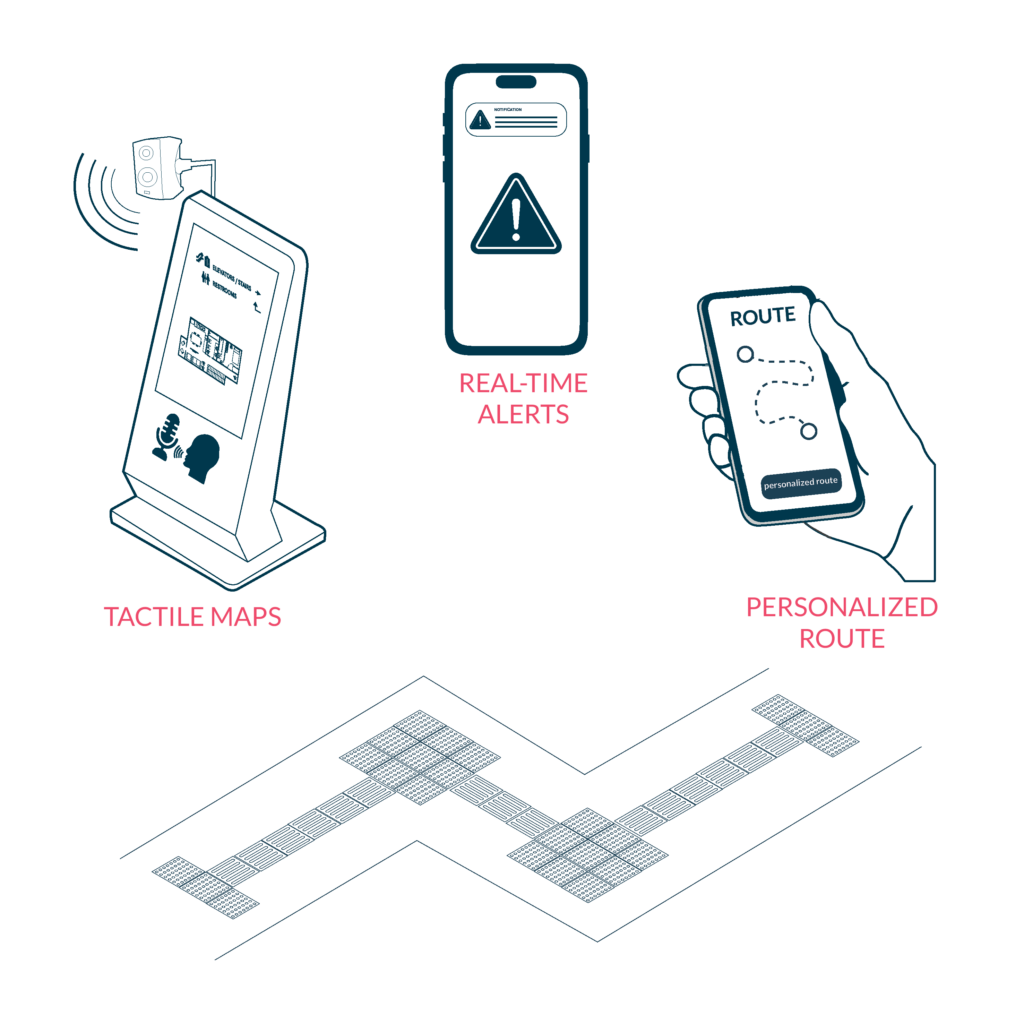Navigation Assistance
People with mobility or visual impairments need safe, well-planned routes to navigate urban and indoor spaces independently. Assistive technologies help by offering barrier-free route planning, avoiding stairs and obstacles, and providing real-time navigation guidance. Features such as audio descriptions, tactile maps, and digital navigation tools enhance usability for diverse needs. Ensuring these systems are continuously updated and easy to use can greatly improve accessibility and autonomy.

- Design continuous, accessible pathways that avoid stairs, narrow spaces, and obstacles.
- Include real-time navigation aids, such as tactile maps, audio descriptions, and mobile app guidance.
- Ensure that digital navigation tools are compatible with screen readers and voice commands.
- Provide real-time alerts for route disruptions or temporary barriers.
- Offer personalized route options based on mobility needs, including step-free and wide-path alternatives.
Sources
- https://accessible-eu-centre.ec.europa.eu/content-corner/digital-library/en-172102021-accessibility-and-usability-built-environment-functional-requirements_en
- https://www.access-board.gov/adaag-1991-2002.html#2.%20GENERAL
- https://universaldesign.ie/built-environment/building-for-everyone/building-for-everyone-full-series
- https://www.codigotecnico.org/pdf/Documentos/SUA/DccSUA.pdf
